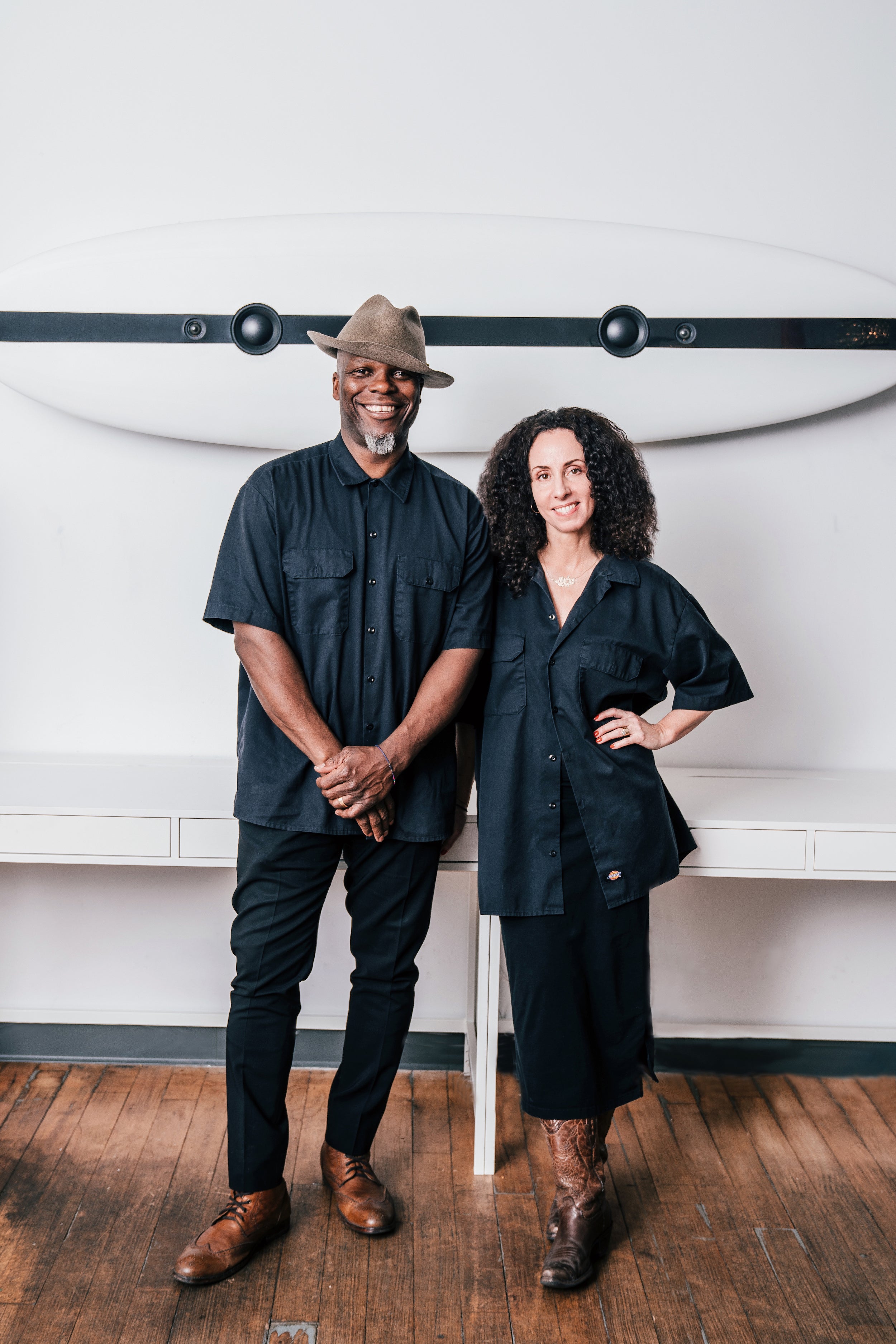The 50 States Project is a yearlong series of candid conversations with interior designers we admire, state by state. Today, we’re chatting with Brooklyn, New York–based Cristina Casañas-Judd and General Judd, who founded the architectural interior design studio Me and General Design in 2012 after careers in film production, set design, and performance art, including stints at Queer Eye for the Straight Guy and Blue Man Group. They tell us about how show business taught them confidence and speed, and why the best collaborations are born organically, as well as sharing their take on the design industry becoming more inclusive.
What was your path to founding your firm together?
Cristina Casañas-Judd: General was an actor in Blue Man Group when I met him. I was straight out of college and had just started working at the theater. Long story short, I started working, we met, and it was love at first sight—right, General?
General Judd: Of course! It was at the Astor Place Theatre. I was an actor, but my background was in film production. I worked for almost 10 years in North Carolina in the art department on films such as The Abyss with James Cameron, the first two Teenage Mutant Ninja Turtles, and tons of other stuff. When I moved to New York, the first gig I auditioned for was Blue Man Group, which turned into an 18-year career.
So the two of you meet—then what?
Cristina: Shortly after we met, I went off to do set decoration for the first Queer Eye for the Straight Guy. That was my first gig. I was not trained in production, but a friend needed help with the decoration. She was like, “This show is so crazy and I can’t do it all—I know you’re a fast learner and you’re artistic.” I didn’t have formal architectural training; I was more of an artist, but the creative world, as we all know, is adaptable.
So you were handling the logistics side, too?
Cristina: She got me in there, trained me, and I became a set decorator. The thing about TV is that you build it and then you tear it down. But Queer Eye was a different animal because we were also building something for a person, so it had this wonderful quality and longevity to it. The experience trained my eye; it also trained my ability to manage crews and budgets.
From there, I met some other production designers, and for the rest of my career as a set decorator, I was doing feature films back to back. When I left, I had four in Sundance, which was amazing. The schooling of being on set and doing interiors with [Queer Eye designer] Thom Filicia and then going into the film world is not that different from what we do today. It’s the same format, but now, the client is our script—it’s more personal and it becomes their journey. Both have the beauty of moving the emotions. What I’m most enthralled with is the human experience, and I think that carries through with General and my designs.
By the way, I would have been his boss on his set. Because I was a set decorator, which would employ the set dresser, which is what he was when he was in North Carolina. We joke about that all the time. “I was always your boss.”
General: Still my boss.
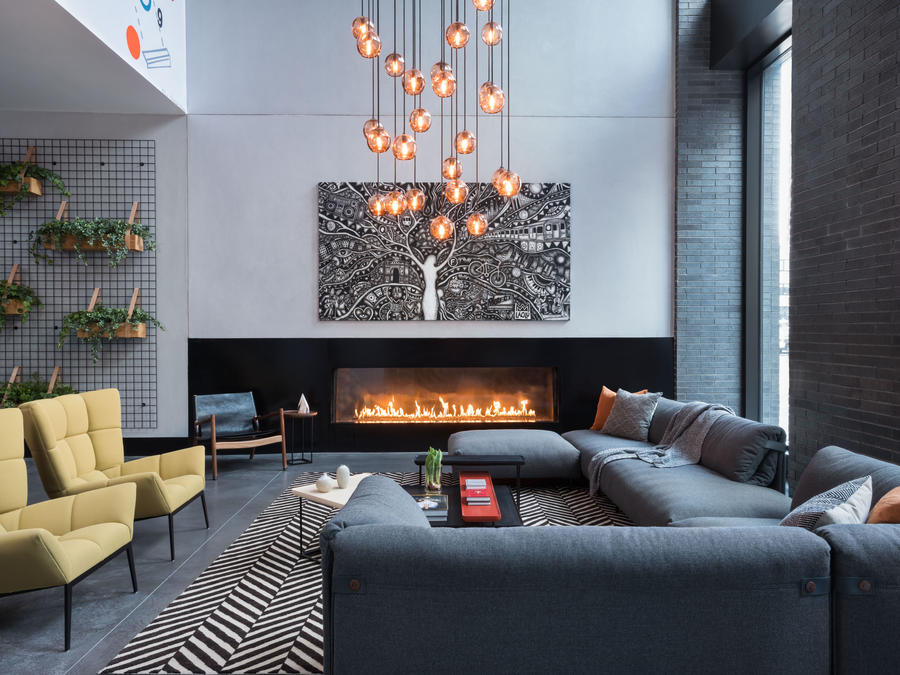
Was there a pivotal moment when you transitioned from film sets to a client’s home?
Cristina: We’d go to film industry parties and meet people from all walks of life. They would ask what we do, and one real estate agent we met was like, “Oh, my gosh, I love Queer Eye!” She told us she needed really fast models and thought we’d be perfect at it. A side hustle! She was like, “If you could just model up condos for me when I need them … ” So I was doing that for a while, and it just felt fun and fresh.
Word spread fast, so soon we were doing it for quite a few different agents and companies. And then one told us, “I have an awesome developer with this building in Williamsburg. They want a street-cred art feeling, and I think you guys would be perfect.” At the time, I was like, “I don’t know, this feels a little out of my league,” but she was like, “What are you talking about? You do film, you’re fine!” So we took the interview.
What was that experience like?
Cristina: Of course, we’ve got butterflies. We walk into this high-rise building in downtown New York, and as we go through the lobby, we see other people waiting for the interview.
General: Celebrity designers sitting there. We were like, “How do we even think we can do this?”
Cristina: Of course your heart is pumping outside of your body. We walk into this room with this classic, beautiful, humongous boardroom table with about 20 developers and investors sitting around it.
And this is effectively the first interview of your business.
General: Yes.
No pressure.
Cristina: No pressure! The entrepreneurial spirit is about always throwing yourselves out there, and I think we both are very strong on that. We’ve always taken those chances, straight from the beginning.
General: Film and TV sort of sets you up for any situation. It’s fast and furious.
Cristina: That gives you confidence. I sit with movie producers, I was telling myself. This is not that different. But it was all very new and intimidating in the sense that we didn’t go to architecture school. I was transparent that I had just signed on for a new film. What I didn’t mention is that I was also three months pregnant with our second child—and at three months you don’t tell anybody, but my emotions were all over the place. I was like, What are we doing? This will never be possible if I’m on a film. We took the interview because I wasn’t even expecting to get the job.
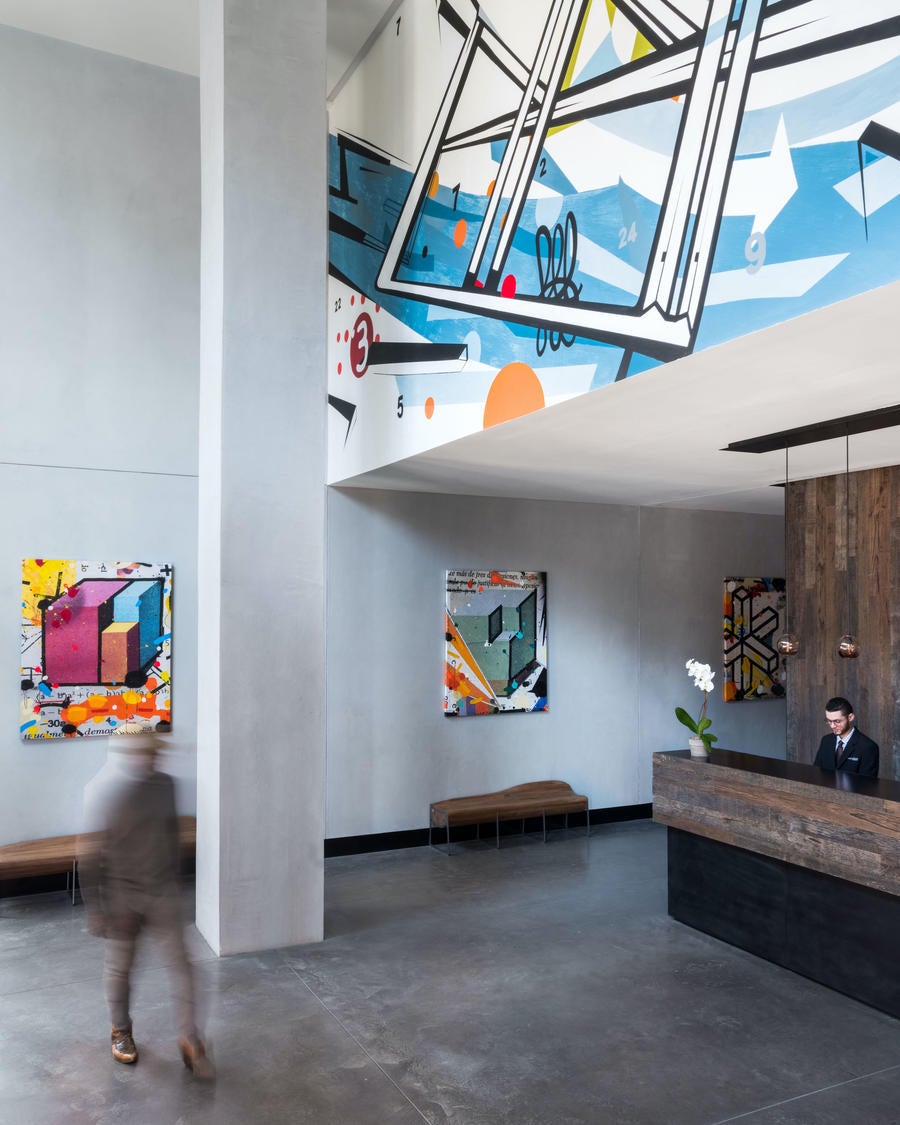
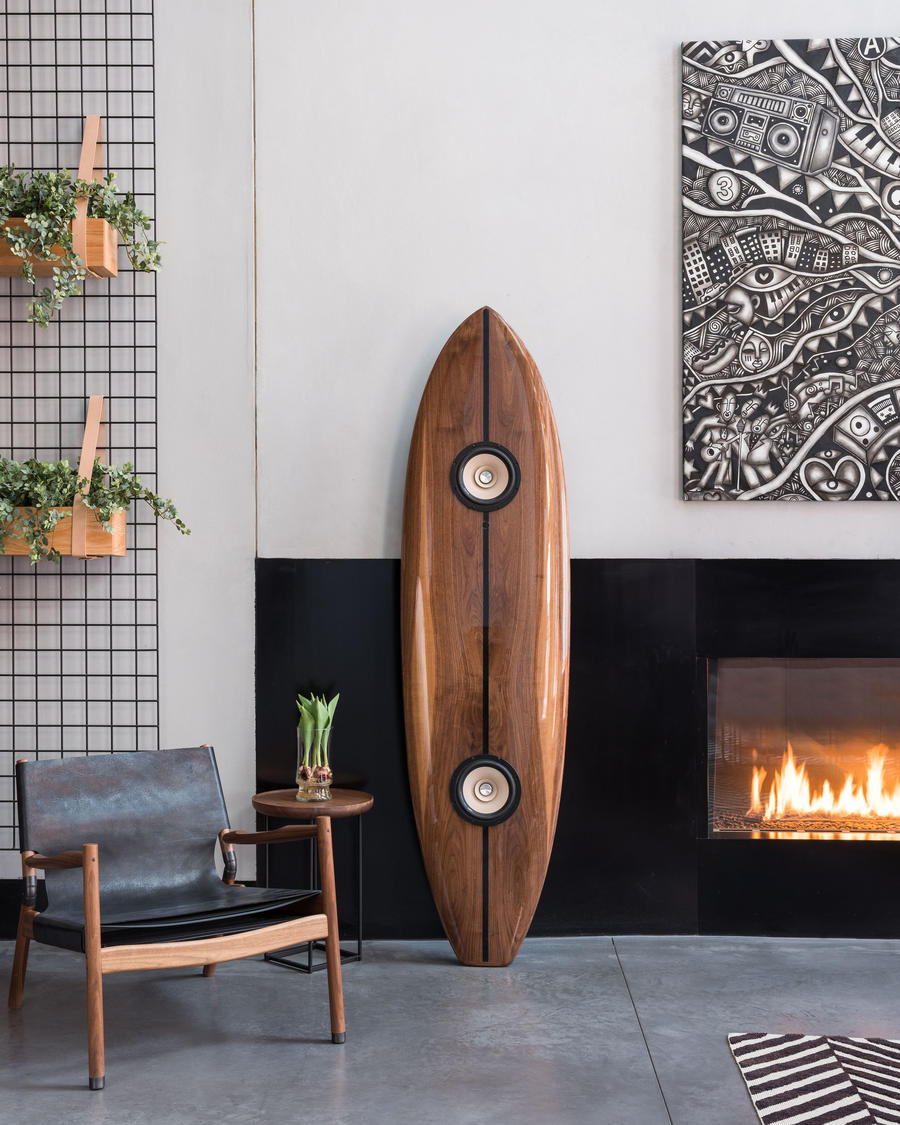
But you got the job.
Cristina: We got the job, and the movie I was on folded—the universe works in wonderful ways. It was an amazing experience. It was a new high-luxury rental development; we were brought in a little later in the game than we normally are now, but it was because they weren’t happy with the former designers. It was not as much architectural for that one, but we were able to make massive changes in the visual look based on the finishes, corridors, amenities, apartments. And then there was sourcing street art. We had a friend do an enormous mural on one wall. It was a total success—our first time working at that scale, and we were like, “Wow, we did it!” We learned so much.
How long did that project take?
Cristina: About a year.
General: And then they upped the ante on us.
Cristina: Yeah, they offered us another project: a historical condo building downtown in the Financial District that had been sitting vacant for 10 or 15 years that they were converting into a high-luxury rental. It was 2010, and that was the market at the time. The project was renovating an existing space—the amenity areas and corridors. Not much had to be done in the condos because the finishes were pretty supreme and beautiful, but we needed to change the floors and light fixtures. It was about bringing it to a luxury level, but it’s a historical building, so it was also about preservation. General was still doing Blue Man at night, but he had all day with me, and we worked fluidly together.
General: And then I’d go to work.
Cristina: He’d go off to work and I would take our two children to bed, and we would do it all over again. We were living in a brownstone in Clinton Hill, but didn’t have enough space, so we’d be sprawled out on the floor in the living room. We look back on those days and are like, “Those were awesome times.” Sleepless nights, though!
In 2012, General went on tour for a year. We had a brand-new baby and an older daughter, so my mom was living with me during that time to help with the kids. One day, my mom was hanging out with the baby in another room in the downtown building we were working on, when the principal of the development company came in with a bunch of other financial people who were scouting the building. They were going to build a new sister building to the [original] one in Williamsburg.
I waved and said hi, and he was like, “Cristina, come over here!” So I’m walking over to a bunch of financiers thinking, Oh, my God, my mom better not pop out with my baby. He did a full introduction, then he put me on the spot and said, “We’re going to build a new building from the ground up. You would be designing it from start to finish—is your team up for it?” And in a split second, I was like, “Of course.” That’s when we incorporated the business and got a studio space to separate home and work.
Fast-forwarding, we’re now designing his wife’s mother’s home in Port Washington, New York, as well as his and his wife’s new condo in the Chelsea area [of Manhattan], and we’ve done numerous other projects with them. It was up to us to jump, but he was there offering and took the chance on us, and we always recognize that.
General: Because we were so new.
Cristina: But in the end, maybe, we did know. My movie industry training really prepared me for massive budgets, massive design—it was really that training that gave me confidence. And then you’re able to have freedom, and they seek you out for that. The different background holds appeal.
General: You’re able to deliver what they want, and beyond.
Cristina: And on time, too. That’s another thing they love about us—we’re so fast. Film is like, “Oh, we need that yesterday. Where is it?”
General: We got the 250 North 10th [sister building] project in Williamsburg and did it from the ground up.
Cristina: We built it and incorporated massive floor-to-ceiling canvases painted by a street artist—they’re still there, and it’s amazing.
General: They sold the building, and it was one of the highest sales in Williamsburg at the time. There were times when we were there and we would ask the people moving in, “What made you select this building?” And they always said, “We loved the design.” Which was great for us!
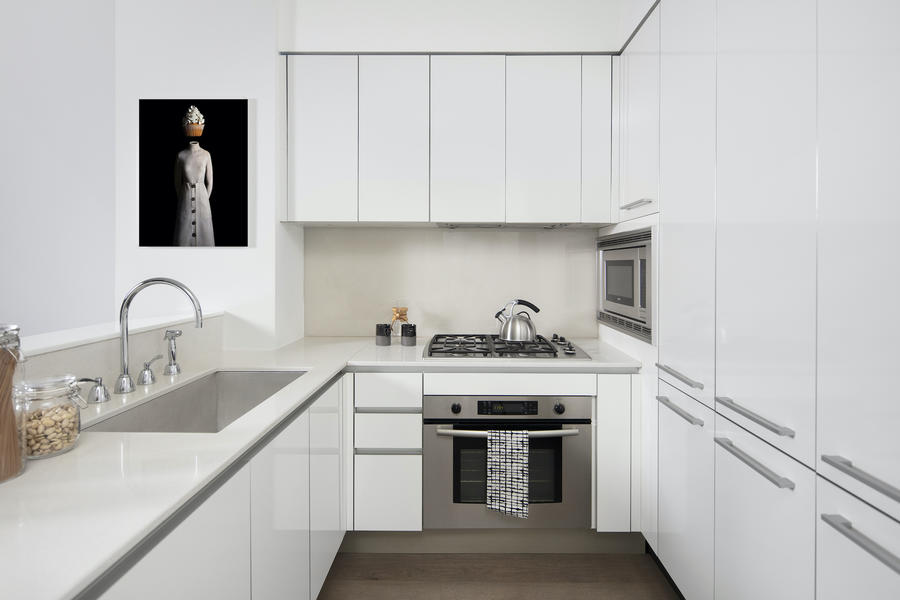
How’d you know that was the right moment to incorporate?
General: The learning curve was huge to build something from the ground up. We would go to the weekly meeting with the engineers and everyone, and it was the first time that we had to do it that way.
Cristina: That was when we looked at each other and said, “Listen, we have to take this seriously; this is not a side hustle.” I knew that with the baby, I wasn’t going to see the film world for a while, and I chose that, but we did have to make that decision—to say, “Well, what are we going to call this thing?” I would always say to clients, “Hey, it’s me and General here, this is what we’re going to do.” So that was it: Me and General.
Did that shift in thinking—incorporating, naming the firm—coincide with getting the studio space?
Cristina: It did. We got the studio, then had a few interns, and then one turned into one permanent employee. And it just built from there.
What does your team look like today?
Cristina: We’re four strong. We have a senior designer who’s been with us the longest and really understands how we operate. That’s a key factor for us, because General and I are the principal designers and are hands on, but he really helps wrap it together. Without that, I think it would be impossible for us now that we’re working on eight to 15 projects at a time. The fourth [person on the team] is part project manager, part purchaser, part bookkeeper. We do a lot of purchasing ourselves—we don’t source that out, so that’s a massive part of projects, and it’s good to have that kind of person on the team. Then there are interns that float in and out—Pratt Institute sends a ton of amazing students our way.
How has COVID-19 upended your team and your studio?
Cristina: When we opened our studio in Industry City, it made sense for us. And if not for COVID, we probably would not have left. Now, we’re in a condo in Crown Heights; we have a house full of homeschooling kids, but we still have space to work, and we realized we can work remotely effectively—it actually becomes more efficient and streamlined.
How long were you in the Industry City studio?
General: Three years.
Cristina: Before that, we were in smaller studios in Dumbo [on Brooklyn’s northern waterfront], which was great, but it got really overpriced.
Really fast, I’ll bet, too.
Cristina: Really fast. We started there right after our incorporation in 2012, and were there maybe five years. But when we were looking to move to a bigger studio, it was like, “Nope! Dumbo’s not going to work!” But Industry City was very welcoming—they had been reaching out to us to come take a look, and we loved it. It’s on the way to our daughter’s school, so before COVID, we’d do drop-off [in the mornings]. With COVID, it was great to reflect on what’s important and what’s not. It feels refreshing to minimize things that were not needed at all.
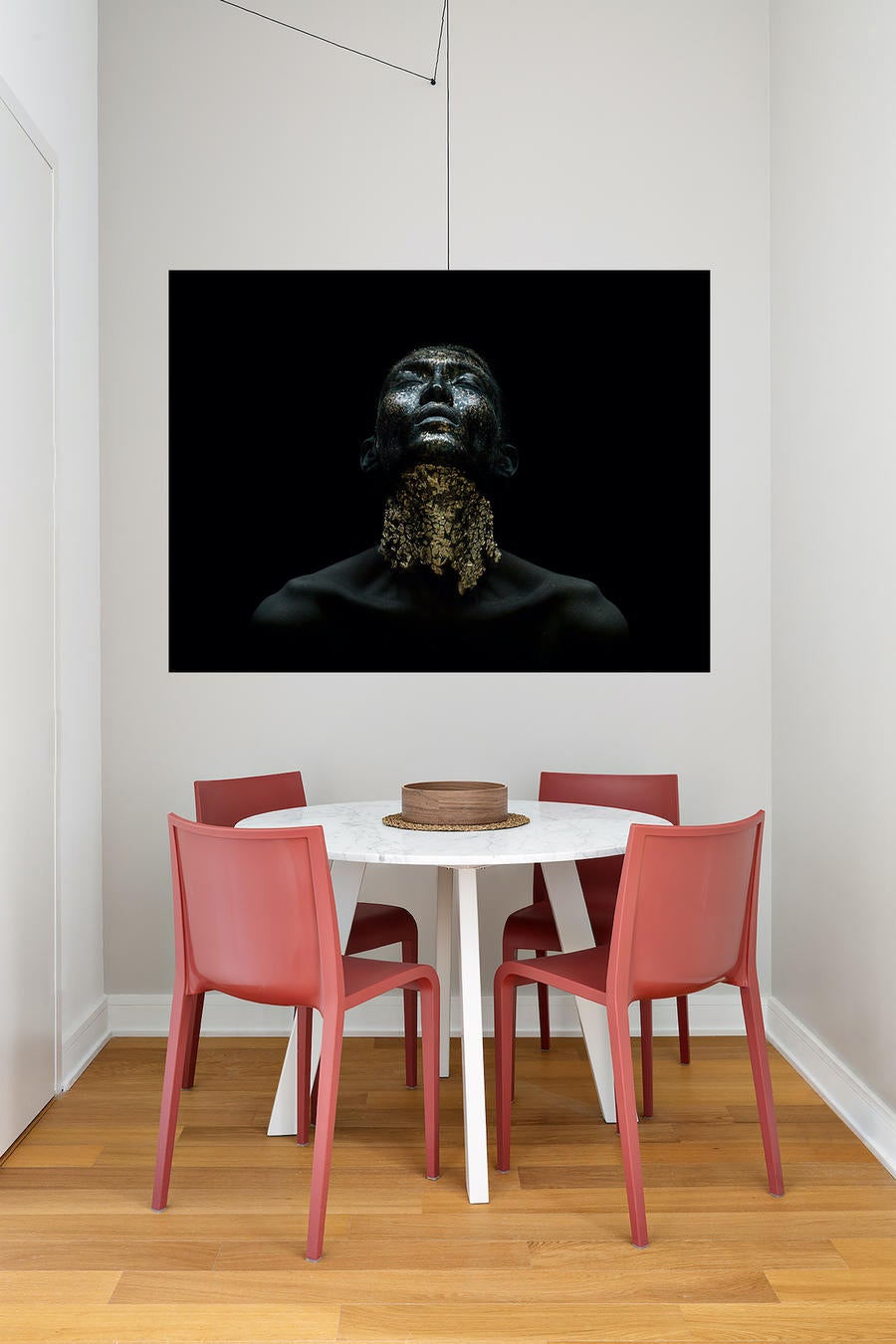
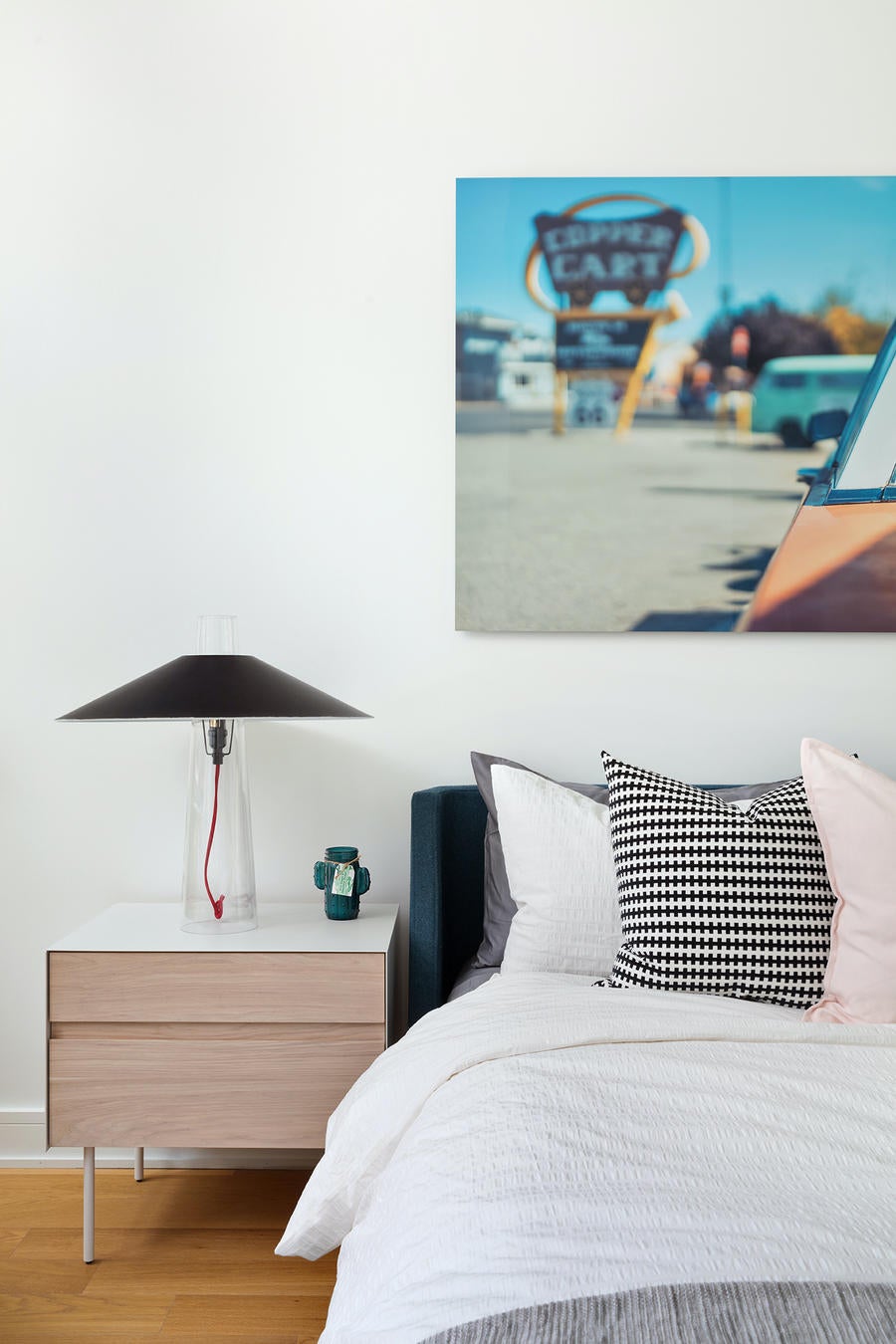
Do you think you’d go back to the studio mode, or does working from home work better now?
Cristina: We’re in a lovely condo right now, but our dream is to build our home with a studio—a proper, major studio—inside, and have it all be functioning within one complex that we’ve designed head to toe. I think that’s our next passion, our next mission, to find the real estate that we’ve been looking at for years—living vicariously through listings, as most New Yorkers do, right?
Escapist Zillowing! I’m an expert at that.
Cristina: Exactly! As interior designers, we’re not looking for something that’s already done. We’re looking for something very specific, but I keep the faith up and we constantly look. Of course, we can go back to Industry City anytime, and I loved it there, but we do work better right now the way we are. We’ve signed on to three new projects—fingers crossed—during this time, and it was a test: “Hey, let’s do this. How does this work?” We didn’t skip a beat.
How do clients find you?
Cristina: Word of mouth. We never have done any formal marketing or outreach until this pause. I think, like many other designers at this point, we’ve finally stopped and reassessed how we work. And being a Black- and a minority- and a woman-owned business during the time of the Black Lives Matter movement has propped open lots of doors, too—it’s an interesting time from that aspect as well.
General: We’ve been getting a lot of calls.
Cristina: It did make us stop and think, Were we missing things because we weren’t even thinking about it? You don’t really think about the marketing aspect when you’re just hustling. So our model has changed a little bit; we’re going to look at the opportunities that are presenting themselves to us and be very intentional about what we do next, but also start to reach out for other things that we might not have thought of before. We have had a beautiful run of growth and development and maturity and security in what we do, but I think the future is about being uncomfortable again, you know?
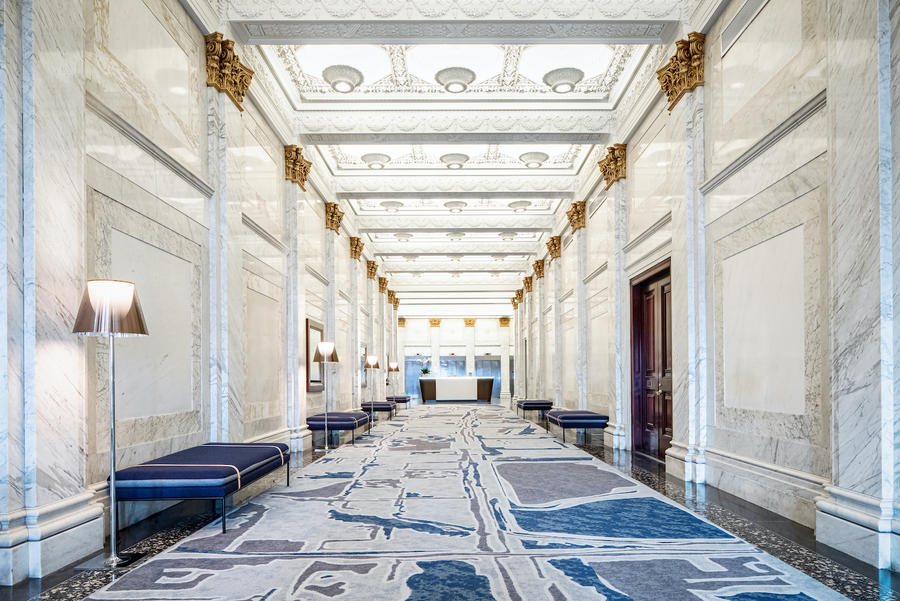
What part of your business has potential that you are most excited to grow?
General: We branched out along the way—we created some custom wallpapers using that creative side, being artists and entrepreneurs. Some clients have said, “We don’t have any branding for our building,” so we were like, “What about this?” There was one project that had a nice name and logo, and we drew up some ideas for a wallpaper using the logo intertwined with the way the building looks, and they loved it. They filled the entire building’s corridors with the wallpaper—and then one turned into two, two turned into three, and all of a sudden we were like, “Wow.”
Cristina: “We have a collection.” Another building that we did, we took the beautiful facade and created the wallpaper. It became a specialty thing—they’re not going to find that anywhere else, and it was made for them. Clients love that.
General: We didn’t really know anything about manufacturing wallpaper, so during that process we got in touch with [New York–based wallcovering brand] Wolf-Gordon to manufacture the papers.
Cristina: And then they brought us in!
General: We kept coming back and customizing these papers—and selling large quantities of the paper—and they were like, “You guys are blowing this thing out of the water.” So they commissioned us, and now we have a licensed line.
Cristina: Which was such icing on the cake. We would create these things anyway, because it is part of our creative nature, but to have a brand like Wolf-Gordon come to us and say, “We see what you’re doing, we like what you’re doing, and let’s do this together” is amazing. Now we’re part of their permanent London Chic collection. That was a really beautiful, organic moment.
The other major product we’ve developed is Swick Board, which is a surfboard [with a built-in] speaker. The story behind that was a client who said, “I need a wow factor in my house,” and General was like, “Well, I’ve always had this idea in my head ... ”
My family’s from Chile, on the beach, so the ocean is in my life. They’re quarantined at the house on the beach right now! I was born in the U.S., but I’m first-generation and we go back to Chile all the time.
General: And I grew up in North Carolina, so I would go to the beach when I lived in Wilmington. I had lots of friends that were surfers.
Cristina: The other side [of the product] is the music. General’s a musician—Blue Man Group is all music, percussions, antics. So he was like, “What about combining the speaker system and a surfboard?” It connotes such a vibe, where you think, “That’s the life I want—a surfer life.”
General: It connotes vacation and fun and a certain lifestyle.
Cristina: So we did that for the client, and it was just an awesome one-off. And then we did one for another person, and then another, and we just kept developing it on the side. We connected with the surfing community and got obsessed with the upcycling and reusability of a material. I think our future is actually that—reutilizing materials in design in whatever capacity you can.
My dream job is taking spaces and environments that I can revive by utilizing what exists. I love the idea that everything comes back around, full circle, and that we’re not just piling more carbon footprints on this earth. So when we started doing Swick Board, we thought, We can go and repurpose broken surfboards. They don’t do anything with them.
General: They don’t biodegrade.
Cristina: We’re friends with a lot of Rockaways surfers and they were like, “Yo man, just take it! We can’t do anything with this.” So now we upcycle them [into Swick Boards], and people love that aspect, too. They’re commissioned pieces, and we’re still developing them; right now, it’s a recycled surfboard with music and a light feature, but we’re also going to collaborate to create art on it—we look at it as a functional art installation.
General: We went to ICFF one year for the Wolf-Gordon papers and hung up two Swick Boards just to spice up the wallpaper. People would walk in and their mouths would fall open. They were like, “What in the world is this? Is that a surfboard with speakers in it?” From that, we were contacted by a company out of Ann Arbor, Michigan, called Leon Speakers—they make their own audio equipment and were interested, so we went out there with some boards. They engineered it and really took it to the next level.
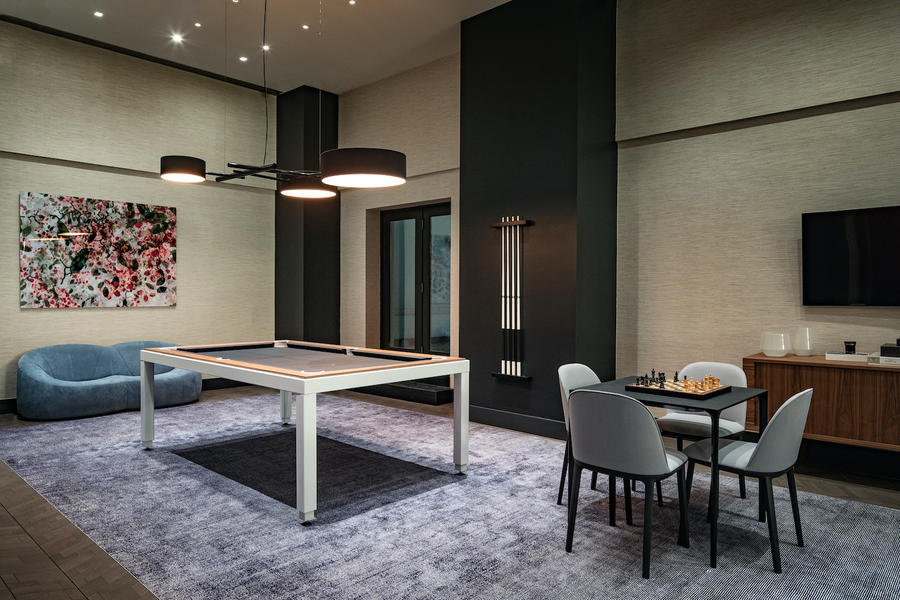
One of the interesting things about this series is that I’m often talking with designers who are in cities or states with very limited access to design resources. And they all say, ‘It’s not like New York.’ Here, in theory, we have access to everything. In that kind of environment, how do you shop? Where do you get inspired, and how do you source?
General: All the trade shows.
Cristina: The ICFFs, WantedDesign—we go to all of them each year, and there’s a lot of repeat stuff, but there are always new things coming in. It is a luxury to have that in our backyard, for sure. But the reps that contact us to show us things is a major resource, as well. Maybe because we’re in New York it’s easy for them to do because they have showrooms here, but we do get tons of people coming in to present. You get a really good show and understand stuff, and we’ve gotten tons of product from that.
How do you decide which of those meetings to say yes to? I can’t imagine you want to take all of them.
Cristina: It may be based on what we’re looking for in our projects—rugs, for example—and if one pops up at the time, we’re like, “Yes, come in. We need that.” But other times, it’s really just about the level of what they show, if we see something that’s really intriguing, where it feels like: Wow this could be something new.
General: And our sourcing is also based on the way we shop. Some vendors come to us and we say, “We don’t purchase that way,” so that will make the decision for us. Or we ask what their lead times are.
Cristina: We have a library of our own, but not a huge one. We’re online a lot, but we have to see physical samples to really get the design started. And of course, we’re very lucky to have the D&D Building, where we’d go prior to COVID.
General: And the streets! We love supporting small businesses, as well.
Cristina: Industry City was great for that, because there are tons of makers there. And as makers ourselves, we love the movement of makers that happened in Brooklyn years ago—and they’re still here and are so available. We had one project in downtown Brooklyn where we looked at each other and were like, “We’re going to take all of our maker friends, and their friends, and others we don’t know, and we’re going to fill this place with it.” And we did it super successfully, selecting little shops and having them make custom pieces for us, from art to lighting to furniture to finishes.
What is it like working together? What is your dynamic?
General: You know, the great part is that Cristina and I have such different personalities, as you can probably tell. Cristina is fast, speed, quick, go. I’m more subdued and mellow, and in that way, more cautious. So it works very well.
Do you have a different way of interacting in your work versus personal life?
General: I think we are who we are always. We’re pretty true to who we are in the office, and it’s pretty much the same at home.
Cristina: How we navigate problem-solving, whether it’s for family or business, it’s sort of the same process. I think what clicks in us when we move into the studio space is that it’s more about deadlines and I’m not relaxed. I’m like, “We’ve got to do this, this and this.” Once General and I are at home, it’s like, “Yeah, whatever! We’ll get it done eventually!” But as far as the way General and I act together, I think we only knew we could do this business together because we have a certain kind of syncing, because we’re yin and yang, because we’re different—and even our design direction is different. He brings different things to the table, always, than I’m thinking of.
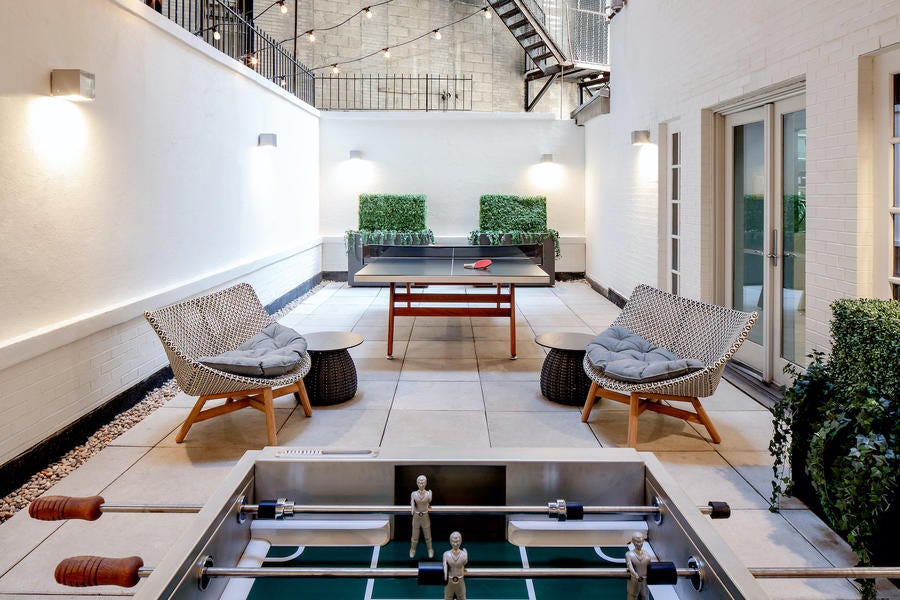
How does that manifest in the aesthetic sense?
Cristina: With residential projects, I’ll walk through the space during the consultation and from what I’ve gathered from the client’s needs and direction and our conversation, I’ll immediately know what I want to do—it’s very clear to me always, every time, and we develop from that. So I come back to the studio saying, “This is what I think, boom, boom, boom!” I lay it all out. And then General walks in and says, “Let me look at that, let’s see what that is.” I think General brings in that other perspective of, “I hear you, and that sounds great, but what if we did this?” He draws it back down to reality.
At the same time, a lot of that original vision does come to fruition. I think it was the training in film, where I needed to come up with answers super fast. A producer was always standing there, and he’s just not going to take, “Give me a minute to go back to the studio and figure this out for you” as an answer. He’s like, “What are you going to do right now?”
General: I know that feeling, too—it was the same thing when I was on set. You’d be working on a film at someone’s private home and all of the set would be there, and someone would be like, “We are going to look this way with the camera.” But sometimes it’s not in the script, and the art department has to say, “OK, we haven’t seen this side of the room,” and then you make all these adjustments on the fly while the crew and the actors are standing and waiting.
And you feel like everyone’s tapping their foot?
General: Oh, my gosh, yes! I’ve been in so many of those moments, and there have been times when the only person there [to solve the problem] was me. They’d be like, “After lunch, we’re coming back and we’re going to see this side of the room.” And I’d be like, “Wait a minute, that’s not on the call sheet.” And you can’t put a hole in the wall, but the director wants to hang a piece of art.
Cristina: Problem-solving is a huge part of what we do now, too. The training in film is what gave us a razor-sharp confidence in delivering something for the need. It’s like, you need this—and whether it’s based on a script or a conversation with the client, there’s a need. And maybe personal residences don’t have to go so fast, but it’s just embedded in you.
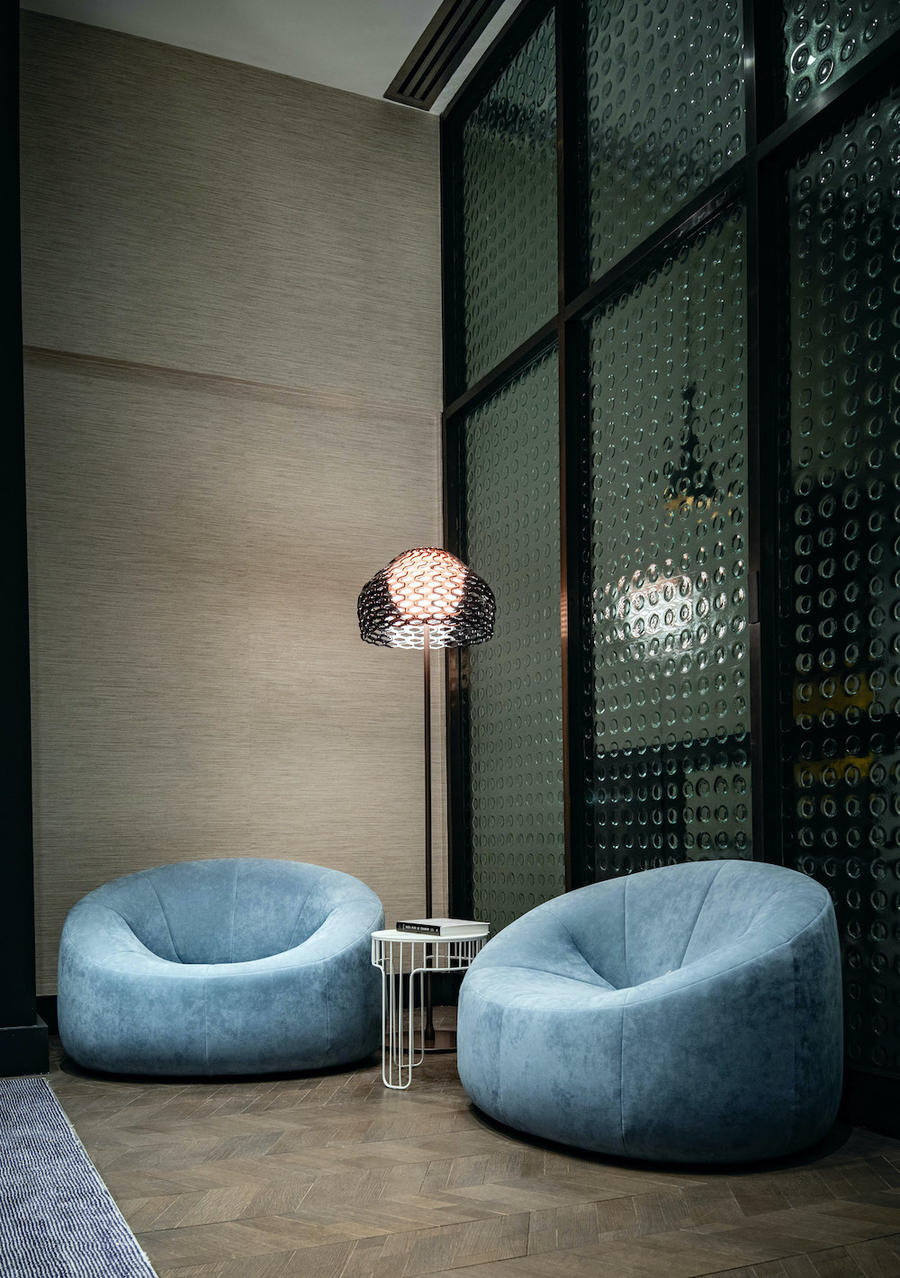
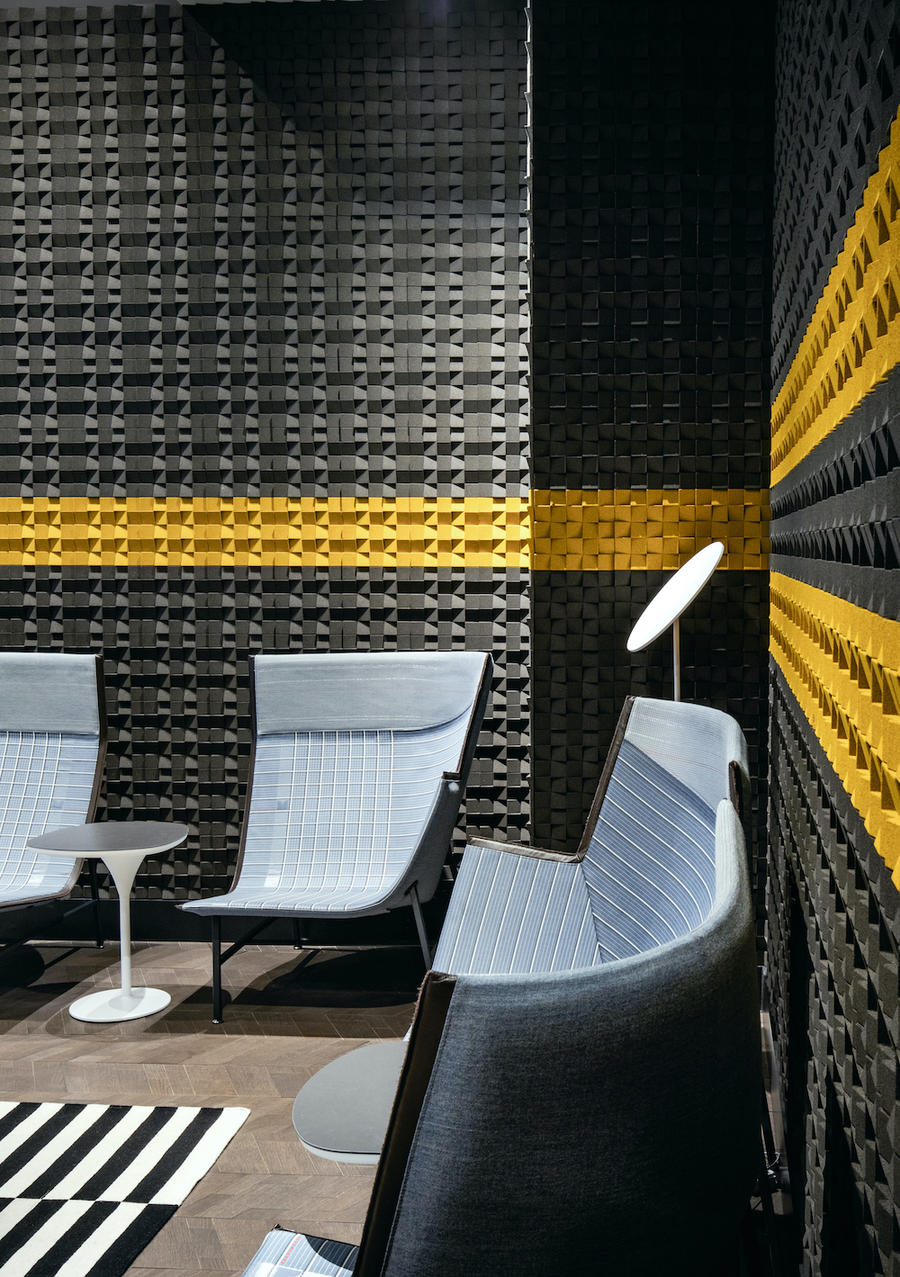
Whether it’s public spaces, residential buildings, or private residences, how did you approach billing for those different kinds of jobs?
Cristina: We’re very transparent about money, and we believe in flat fees entirely, based on our experience, the size, all these calculations about the needs, and the scope of the work. Our first conversation is design intent, obviously—getting the whole idea—because we need to know the scope, vision, ideas, expectations, and then we talk a bit about timelines. We don’t talk numbers immediately; we go back, assess it ourselves, and then we have a dialogue before we go further: “This is what you’re looking at as far as budget.”
The approach to a developer is totally different because they come to us with the budget already, and they have a number, even if it shifts along the way. But when you’re talking to a private resident or retail entrepreneurs, they don’t know what to think. We make it so that it’s very comfortable to understand what the cost is for, and can give an example [of a past project] and say, “This is what it cost them at the end.” We explain that we can give an estimate, but variables change along the way. We’ve never been hourly, though, unless things go beyond our scope—then it’s in our contracts, very clearly written, that that will be an hourly rate. We’ve never actually had to do that, though. We’re very clear from the beginning.
General: And we always hit our timelines.
Budgets and client management are so closely linked.
Cristina: Because I feel like money is everything for everybody.
And everyone’s so scared of talking about it.
Cristina: Exactly. I always just address it immediately, because it’s also a way to weed out if a project isn’t going to fit what we’re worth and what we’re trying to do for them. We’ve said no to projects as a very conscious choice. If the money’s not clear from the beginning, there are going to be problems, and I think the best way to solve that is to confront it immediately. We have to be very careful about our time management and what we’re worth, especially now that General stopped doing Blue Man a few years ago.
Wait, you were still doing the show until just a few years ago?
General: I was full-time, and then I cut my hours and wasn’t full-time when we incorporated, but the theater would call me all the time to do shows. My last two years on the show, I had a contract and would go to Boston every Friday. I would work in the office with Cristina all week long, but then come 6 o’clock on Friday evening I’d run to Penn Station, jump on a train, go to Boston, do two shows on Saturday morning, then come home Saturday night.
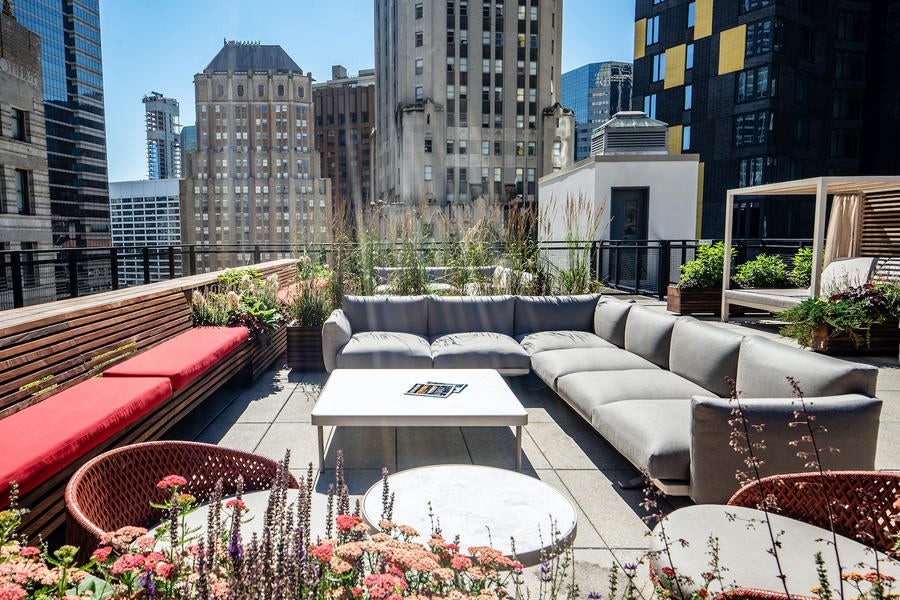
How did you stay creative and inspired when you were pulled in that many directions?
General: It was exciting, because a show like Blue Man is a lot like design for us—it has an organic feel acting-wise. I didn’t have to learn any dialogue, I didn’t have to sing. I was really good at it, the physicality of it, and it was good for me. I just couldn’t get away from that applause, it was so great.
Cristina: Until it became too busy for us. I was like, “Babe, come on.”
General: It got to the point where I was standing on stage as a Blue Man and I was thinking about design.
What is the biggest thing you wish you had known when you incorporated?
General: The importance of having confidence on the business side. Once you incorporate and things are official, it takes over and you’re just as focused on running your business as the designing.
Cristina: It’s like a marriage certificate—it’s a mental thing where you’re like, “Oh, my gosh, now we’re serious.” I don’t think that we need to be everything. And we shouldn’t be everything. Maybe it’s just like everything else—that which you don’t know, you go learn, and you seek out advice or hire someone part-time to help—and that’s what we did.
Where did you go to fill in those knowledge gaps?
Cristina: Friends who were entrepreneurs and have been doing this; and also the SBA, which has resources, mentors, and people to talk to on the fly.
General: There were people in the industry we would call to ask for advice on something, but they would not give us anything. Nothing at all. They thought we were crazy to even ask them and would hang up on us.
Cristina: It feels very different now. I think [the sense of] community within the design industry is much stronger now.
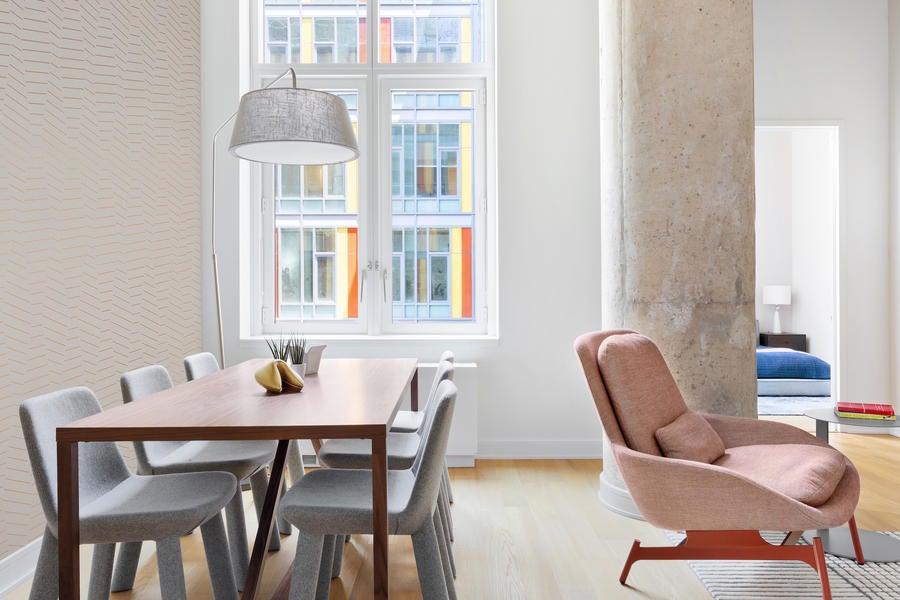
What do you think changed that?
Cristina: We became friends with more people and that opened up different doors, but I do think there was a shift in the industry itself becoming less exclusive.
General: Exactly. But that movement was happening before all this. Remember when I said, “Hey, I think the new thing is people just giving away information.”
Cristina: Yes! General and I were like, “Why didn’t they do that when we needed it?” When we were getting all this negative feedback from other designers—industry people just not wanting to help—we vowed back then that we would never do that.
General: We were like, “We’re going to help anyone.”
Cristina: Be like, “This is how we do it! This is what we’ve learned.” And we’ve done that ever since. Maybe that’s what’s drawing our community. But I think on a bigger level, outside of us, it’s been happening, too.
General: I think it’s the new human factor that it’s important—for any and all industries, people should be open and be able to give information.
Cristina: There’s enough for everybody. I feel like having that sort of thought process just attracts more of that.
What role has social media played in that?
General: Cristina got us on Instagram early.
Cristina: Just because on a personal level I was inspired by it—I threw anything I wanted on there, and then Instagram became this craze. I think the social media thing has frustrated tons of people. Along the way, algorithms go crazy and people get all bent out of shape. And I’m like, “You know what, if at the end of the day your content is what you want it to be, or if you want to move it a step further and make it be a purposeful, sort of calculated thing, then by all means do it. But do one or the other. Just have it be what it is and showcase your process, your inspirations, your jobs, and your finished product—and connect to people.” The whole point is that you’re supposed to have interaction. At the end of the day, it’s how you look at it and it’s what you want to do with it.
Has that connection become vital for your business?
Cristina: When I meet somebody, I look at their Instagram first and then their website. So I do tell people, “It’s important.” But if you feel anxiety about it, you could hire an intern to start with, or a temporary part-time person that really regulates it for you. Because if it’s something you’re not comfortable with, you’re not ever going to want to do it. It’s like bookkeeping—have a bookkeeper and be on top of it, regulating it, but have someone do the legwork or answer the questions for you.
By the same token, never let go of something that’s yours. That’s one thing that as entrepreneurs, General and I are very keen on: However big we get, it’s us. We’re the brand and we have to be very heavy-handed on the final design, budget—everything. I’ve seen friends who have lost track of one thing in their business and then it all goes haywire. It’s a lot to manage.
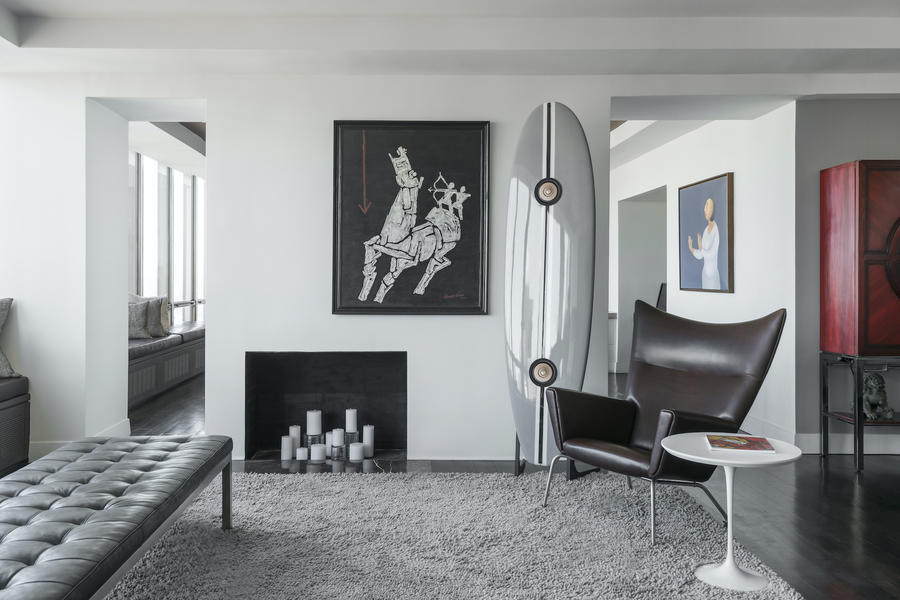
What’s keeping you inspired right now?
Cristina: The human spirit and resilience of people—having the country and world pause and people all over the place, in all industries, coming together to support each other. And Black Lives Matter—with General being Black, and [me being] a Latin woman.
General: The industry is opening their eyes to be able to give back in a way, which is great. I’m excited about the potential of this not being a trend or fad—not going back to the way it was in six months, but being included in the room because we’re good at what we do.
Cristina: And sticking up for our skills and our product.
Has this moment felt different?
Cristina: General and I have talked about this. We feel like the movement back in the 1960s and ’70s was very different than today. I do think some people are in it for being in it, and that makes us feel hopeful for the future because it really is about changing systematic stuff. There is no other way to make all of this change stick. When there are enough people that understand that in the right places of power, combined with the inclusivity of us, people of color, in those places to make those changes, finally [the change has staying power].
We’re being sought out because of what we’re doing as a business. We are designers, we are innovators, we are creators. We happen to be Black and Latin, but you don’t see that—you see us for what we bring to the table, and the table and chairs are open, and it’s not the same people just rotating around. This is the future I’m talking about—I hope that out of all the heartache and hardness comes a hopeful human experience.
General: The world needs that. It’s not going to be an overnight thing. But those slow steps to do it are super important.
Cristina: Even this, the 50 States Project—you’re understanding people for who they are in our industry. I think that’s the kind of beauty that’s going to come out of this harshness.
General: And it shows the human connection. It’s important for people to realize that we are all connected.
Cristina: General and I thrive on the human experience. If you think about interiors, we’re elevating people’s lifestyles and worlds by the simplest things, right? They could change their whole trajectory of their future because they feel better. They become confident. They invite people over. It might not even be conscious—it might just be a subconscious opening up. In one lobby renovation, we had eliminated some steps, and that enhanced the ease of entering [the space and] changed the feelings and experience. You know, people who have wheelchairs or baby carriages—it’s simple stuff. I mean, not simple to do, but it was essential in the end. We get those emails that say, “You just changed my life.” That’s what really makes General and I carry on.
Is that a hard sell to developers, or do they understand that that piece is really important?
Cristina: There are two kinds of developers, and the ones that we’ve worked with repeatedly understand that. Somebody that’s just in it to make the money fast—we are very, very intentional about not working for them. Those are the kind of projects that we have said no to, and I think if you say no to something, something else comes up right after that’s meant to be. I am a true believer that if the energy is not right, then it’s going to be a bad thing in the end, and you might miss another opportunity that would have come. But those can be hard calls! There were lots of times that General and I were like, “What do we do?” And then we just have to dig deep.
General: And trust our experience. We have to trust ourselves. I think that’s key. We’ve done this long enough to trust that feeling. We’ve experienced this before. So just keep showing up and making it better and being the best that we can be.
To learn more about Cristina Casañas-Judd and General Judd, visit their website or find them on Instagram.















